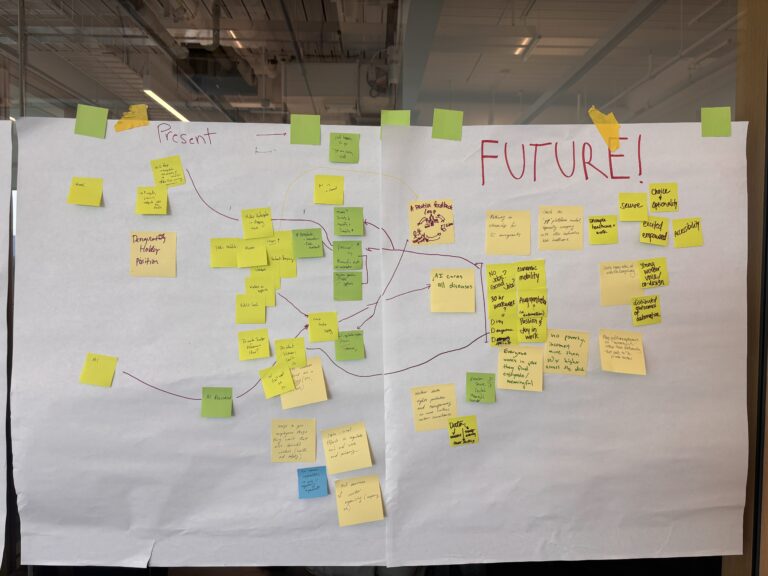By Laura Maher, Siegel Family Endowment
The coronavirus pandemic sent a clear message that equitable access to infrastructure is a requirement for living and thriving in today’s world. With today’s vote in the House, the $1 trillion investment in infrastructure will hopefully be underway and mark a significant step towards modernizing critical infrastructure. While this funding would be historic, it remains outmatched to the momentous task of creating a more equitable and resilient foundation for all. Fortunately, there are ways to make $1T go further while also getting us closer to our equity goals.
How?
As we laid out in our 2020 whitepaper, infrastructure is a process. To get the greatest return on our investment, we have to consider the total sum of value that can be created at each step in that process. While the end results will be fixed assets like repaired roads and fiber optic cables, there is a vast opportunity to create equitable gains for communities along the way in how we design, procure, build, maintain, and plan for infrastructure’s purposeful demise.
So what does this look like in practice?
Design with communities
This message is not new, but bears repeating. When we talk about building back better, we must first ask: what do we mean by “better”? This next era of infrastructure should not only be equitable and economical; it must also meet the continually evolving needs of the future, rather than play catch up to meet standards of the past. And because what “better” looks like on the ground differs between each community, it’s crucial to center the design alongside those who will live it.
Rebuild by Design is an exemplary example of how focusing on outcome and goal-setting can yield more effective rebuilding. Originating as a response to Hurricane Sandy, Rebuild by Design assembled teams of experts from diverse fields, including architecture, urban planning, and environmental science, who were then assigned to specific communities to help those impacted envision what rebuilding their neighborhood would look like. Rather than jumping into devising solutions, members of the Rebuild coalition first spent months getting to know the communities that would be affected by their designs, as well as their values and aspirations for the future. Only then did they begin devising new infrastructure ideas. Now, this collaborative approach defines their work around building and maintaining resilient infrastructure and is a model for how to bring important perspectives into the process.
Select local partners
As states move into the procurement and building phases, they have the opportunity to be purposeful about where the money is going: to think about the sourcing of materials and labor used for the building of new projects, as purpose-driven architectural firms like MASS Design do, to include minority- and women-owned businesses as vendors, and to increase competition by engaging community-based providers. For instance, a new cell tower in a rural area installed by a large corporation based hundreds of miles away may light up new digital connections but it will not bring the additional benefit of investing in regional and local businesses, cooperatives, nonprofits, and labor markets that can provide the same service while lifting up local leaders.
Embed maintenance
States should also consider who, on the ground, will not just make a one-time installation, but who will oversee the lifecycle of infrastructure assets over the long-term, to ensure they meet community needs. Integrating coalitions that represent diverse constituencies from the nonprofit, private, public, and community-based sectors, is a great way to find the stakeholders who are best suited to lead. Organizing forces, such as The Maintainers, offer resources and tools for community-embedded maintenance.
Our present moment calls for an ambitious, visionary approach. Ensuring that federal infrastructure funding is being distributed equitably and economically at each step in the process is absolutely essential to making the most of this once-in-a-generation opportunity. We can build a more equitable America by adopting a multidimensional, equitable view of how infrastructure can be designed for, and operated by, the communities that use it.





